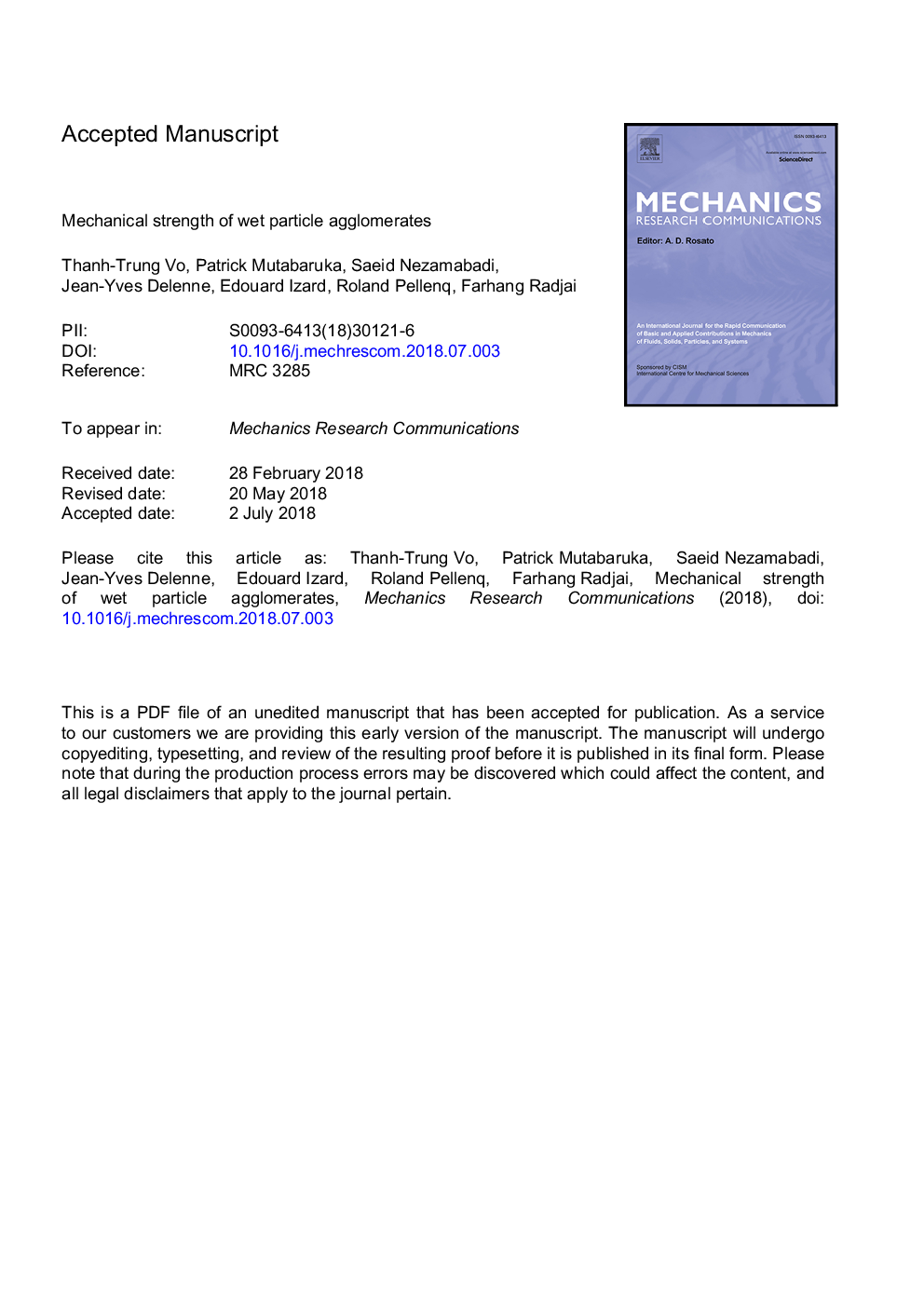| Article ID | Journal | Published Year | Pages | File Type |
|---|---|---|---|---|
| 7178729 | Mechanics Research Communications | 2018 | 11 Pages |
Abstract
Using particle dynamics simulations, we investigate the strength and microstructure of agglomerates of wet frictional particles subjected to axial compression. The numerical model accounts for the cohesive and viscous effects of the binding liquid up to a debonding distance with the liquid assumed to be distributed homogeneously inside the agglomerate. We show that wet agglomerates undergo plastic deformation due to the rearrangements of primary particles during compression. The compressive strength is thus characterized by the plastic threshold before the onset of failure by the irreversible loss of wet contacts between primary particles. We find that the agglomerate plastic threshold is proportional to the characteristic cohesive stress defined from the liquid-vapor surface tension and the mean diameter of primary particles, with a prefactor that is a nearly linear function of the debonding distance and increases with size span. We analyze the agglomerate microstructure and, considering only the cohesive capillary forces at all bonds between primary particles, we propose an expression of the plastic strength as a function of the texture parameters such as the wet coordination number and packing fraction. This expression is shown to be consistent with our simulations up to a multiplicative factor reflecting the distribution of the capillary bridges.
Related Topics
Physical Sciences and Engineering
Engineering
Mechanical Engineering
Authors
Thanh-Trung Vo, Patrick Mutabaruka, Saeid Nezamabadi, Jean-Yves Delenne, Edouard Izard, Roland Pellenq, Farhang Radjai,
